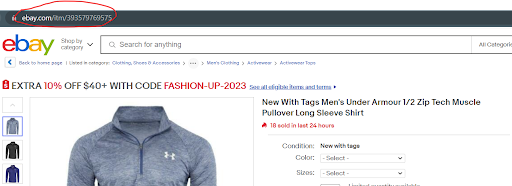Ebay controlled SEO aspects

It is important to note that when it comes to Ebay's SEO, sellers can impact some aspects and improve their search position, while others are Ebay controlled SEO aspects and the sellers has no impact on them whatsoever.
Every Ebay seller knows about Cassini - Ebay’s search engine. It bears a lot of similarities to traditional search engines such as Google, like the use of algorithms for data extraction, but there are a few aspects that make it quite distinct, and require specific optimization.
But before we discuss the differences between Ebay SEO and traditional search engine SEO, we first need to understand Ebay SEO better.
It is important to note that when it comes to Ebays SEO, sellers can impact some aspects, while Ebay has complete control over others.
Ebay controlled SEO aspects
Link Building
One of the main factors Google uses to rank websites is the number of outside links that direct to it. The more reliable the linking website (Ebay, in this case), and the more relevant the website is to the search query, it will be ranked higher. However, it is important to note that link building is very URL-specific.
Since all of the listings and stores on Ebay are operating under Ebay’s domain, when Google detects inbound links to Ebay listings, it does not relate the data to the specific seller, but to Ebay. That is why sellers have very little impact on their SEO through link building.
Page Loading Speed
Google takes into account the speed in which websites are loaded, and uses this information to rank websites. The faster the website loads - the better its score.
Ebay also has quite a history of favoring speedy content. It started in 2012 with Marko, Ebay’s open source JavaScript UI framework, and four years later Ebay used Google’s Accelerated Mobile Pages Project to speed up the loading time of millions of its pages, progressively increasing the number over time.
In 2019, Ebay prioritized a company-wide initiative, aptly called “Speed,” focused on improving the performance of critical Ebay flows across all platforms. Even though by now Ebay can boast half the page loading time of its competitors, its drive to increase loading speed still continues.
Although sellers that go by Ebay’s guidelines and use HTML5 and HTTPS protocol may see a decrease in loading times, the overall website speed is completely controlled by Ebay itself, with sellers having minimum impact.
Structure and Content Adjusted for Crawl
When a search query is entered into a traditional search engine, the engine scours the website’s internal links and content for relevancy, in what is called “crawling”. Among the basic elements of SEO is to make sure the website’s internal linking network works properly, and that the content is displayed clearly. Otherwise, the search engine will not index the website.
In Ebay, however, while the internal linking network is mostly straightforward, pages’ content structure varies quite a lot, despite Ebay’s attempts at unifying those.
Due to these variables, in its crawling, Cassini relies mostly on the listing’s title to determine relevance, rather than the product description. Conversely, when a traditional search engine crawls an Ebay listing, it extracts information from the title of the listing, as well from its Ebay Item Specifics and taxonomy. But again, due to the variables in content structure, the product description is usually not crawled by traditional search engines.
Listings’ URL
When it comes to traditional search engines, the most significant URL-related aspects of SEO are a clear and simple URL that is easy to crawl.
In the past, in an effort to consolidate listings’ URL, recommended sellers to add keywords to the URL. However, these efforts never fully succeeded, and currently Ebay uses a URL pattern that includes only the product’s number, which tells nothing of the product itself. 
Image Alt Text
Many SEO experts recommend uploading images to listings, and using keywords in the file name to encourage visibility. However, what actually determines the content the image provides is a combination of elements in addition to the alt text, such as computer vision and the listing’s other content and data.
Moreover, no matter what name sellers give to an image file, once it is uploaded, Ebay changes the alt text to the listing’s title. And when traditional search engines crawl the listing, they extract the image data from Ebay, not the product description. This makes the whole process of adding alt text to images a waste of time of sellers. A time which could have been spent far better.
Many SEO experts utilize the same tactics they use for promoting websites in traditional search engines, to promote products in Ebay.
However, despite some general similarities, such tactics do not apply to Ebay, either because the specific tactic is not relevant for Ebay, or because these are Ebay controlled SEO aspects without any ability of sellers to impact them.
Next week, we will discuss some Ebay SEO aspects sellers do have control over.



